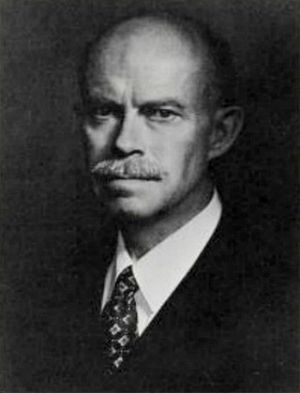George W. Forbes facts for kids
George W. Forbes (born 1864, died 1927) was an American journalist and activist. He worked hard to gain equal rights for African Americans in the late 1800s and early 1900s.
He is famous for starting the Boston Guardian newspaper with William Monroe Trotter. In this paper, they wrote strong articles disagreeing with Booker T. Washington's ideas about how Black people should achieve equality. Forbes also started the Boston Courant, one of the first Black newspapers in Boston. He also edited the A. M. E. Church Review, a national magazine.
Forbes was born into slavery in Mississippi. He later worked at Harvard University and graduated from Amherst College. He became well-known across the country as a journalist. In Boston, he was also known as a helpful librarian at the West End branch of the Boston Public Library. He worked there for 32 years and was the first Black librarian in the Boston library system.
Early Life and Education
Forbes was born in 1864 in Shannon, Mississippi. His parents were enslaved. After the Civil War ended and slavery was abolished, he worked as a laborer and farm hand. When he was 14, he moved from Mississippi to Ohio. There, he studied for a while at Wilberforce University.
In the mid-1880s, Forbes moved to Boston. He worked for three or four years as a laborer at Harvard University. He saved money so he could continue his education. While living in Boston, he became friends with W. E. B. Du Bois, who was studying at Harvard. Du Bois later became a very important African-American leader.
In 1888, Forbes enrolled in Amherst College in western Massachusetts. He made two lifelong friends there: William H. Lewis and William T. Jackson. Lewis became an assistant U.S. attorney general and a pioneering Black athlete. Jackson became an important educator. Du Bois attended their graduation ceremony in 1892.
Career Highlights
After college, Forbes returned to Boston. He joined a group of Black activists known as "the radicals." This group included his friend Lewis, William Monroe Trotter, Archibald Grimké, and others. They did not agree with Booker T. Washington's approach to race relations.
That fall, Forbes started one of Boston's first African-American newspapers, the Boston Courant. It was a weekly paper that he owned and edited. It closed after five years due to financial reasons.
In 1896, Forbes became the first Black librarian in the Boston Public Library system. He was hired as an assistant librarian at the West End branch. This was the largest branch in Boston. At that time, the West End was a mostly Black neighborhood. Later, many Jewish immigrants moved to the West End, and Black Bostonians moved to the South End. Forbes stayed at the West End branch for 32 years. He became a well-known person in the neighborhood and never took a sick day.
In 1901, Forbes co-founded the Boston Guardian with William Monroe Trotter. Clement G. Morgan, another activist, said that Forbes provided the writing and editing skills. Trotter provided the money. In their first issue, published on November 9, 1901, Forbes and Trotter stated their goal. They wanted to fight for equal rights for all citizens.
For the first two years, Forbes wrote most of the newspaper's main articles. His strong criticism of Booker T. Washington gained national attention. W. E. B. Du Bois later wrote that Forbes's work on the Boston Guardian helped Black Americans demand full citizenship rights.
In July 1903, Trotter and some friends interrupted a speech by Washington in a Boston church. Trotter was arrested during the event, which became known as the "Boston riot." This incident seemed to be a turning point for Forbes. Soon after, he left the Guardian and gave his shares to William H. Lewis.
Forbes played a small part in starting the Niagara Movement. This group was a step toward forming the National Association for the Advancement of Colored People (NAACP). However, after about 1910, he mostly stopped his political work. He focused on his job at the library. He continued to write articles about Black history and race relations for other newspapers. He also reviewed books for The Crisis, the NAACP's official magazine. He edited the A. M. E. Church Review, a quarterly journal.
Death and Lasting Impact
Forbes died from pneumonia on March 10, 1927, at his home in the South End. He was 63 years old.
After he passed away, The Boston Globe newspaper called him "one of the leading colored men of this city." They praised his dedication to higher education. The Globe noted that he encouraged many young Black men to go to college.
As a librarian in Boston's West End, Forbes also helped many young Jewish people. A warm tribute to Forbes was printed in The Jewish Daily Forward in Yiddish. It was later reprinted in English in The Crisis and Opportunity: A Journal of Negro Life. The article called Forbes a "friend of the race." It praised his intelligence and his constant kindness. It said that students with problems would go to Mr. Forbes for advice and encouragement. He helped them find ways to overcome their difficulties. The article stated that while Black people mourned his death, the Jewish children of Boston's West End mourned him even more.
The West End branch of the Boston Public Library closed on the afternoon of his funeral. This allowed his library co-workers to serve as pallbearers. Forbes left behind a manuscript that was never published. It was titled History of the Black Men in the Life of the Republic.


